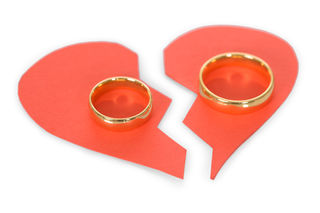Marriage
The Number One Reason Marriages Fail
It's a reason that no one ever talks about.
Posted June 22, 2017 Reviewed by Jessica Schrader

Try this. Ask anyone if they can name the number one reason marriages fail. They will probably tell you it is either because they argue too much, have lousy sex, money problems, infidelity, in-law problems—you know, the usual suspects.
But I believe they are all wrong.
After close to 40 years of marriage counseling, I believe that marital failure between two relatively intact people is due to what I call a "failure to wed.”
Yes, sure, you had a wedding (I hope you had a great time at yours, I sure did at mine)—but did you have a WE-dding, in which you actually became a couple? A “we” instead of just two people sharing living quarters?
You probably have noticed that the title of this blog is “The Two Shall Become As One.” I chose that title because I believe it taps the very essence of a healthy marriage: Two separate and uniquely different people come together to form a whole whose essence is greater than the sum of its parts, and not two individuals who are constantly “hijacking the we” by trying to make their partner become more like them.
Take the case of Milo and Tara. Milo is a stay-at-home guy who likes to read about nature and watch the “do it yourself” channel. Tara is more extroverted, likes to try new things, get out of the house more and meet new people. Tara gets angry at Milo because he “never wants to do anything” and Milo feels that Tara is always nagging him to do things he doesn’t want to do, “like a pitbull, always nipping at my heels.”
Yes, they could compromise, but I believe that is overrated and is not very satisfying to most couples. I prefer solutions that both parties can get excited about. While there are other solutions to this problem that I will discuss in future posts, the one I like the best is what I call “creating a WE.” Creating a WE is doing something that is brand new for the couple, something they have never done before and contains elements of things that both of them would like to do.
Creating a WE is a highly creative act that begins with discussions about possible things that both like and would like to begin to do as a couple. There is no right or wrong during these talks and no one is to be criticized for a “wrong idea.” Just talking about it and trying to come up with some ideas creates a "WE" so it is a success right from the beginning.
Here is how Tara and Milo created their WE. Your procedure might be different. They agreed to create their WE while they had their morning coffee in their sunroom at the start of each day. Realizing that this may take some time, they gave themselves a month.
During this time, they came up with numerous ideas—some were too expensive, or duds when they tried them out. Eventually, they came up with several, such as weekly trips to Barnes and Noble where he could browse the history and DIY books and she could look at travel destinations over a cup of coffee.
But the one I liked the best? You'll never guess in a million years.
They decided to raise honey bees. How uniquely creative! But it was perfect: He loved reading about the various types of bees and then building the hives, and she was able to set up a small store to sell honey where she could meet new people and make new friends. They both loved traveling around to other beekeepers to exchange ideas and see other hives. But most of all, they loved to talk to each other; yup, about the bees.
I know beekeeping is probably not for you, but heck, we live in America and there are a gazillion other things you can do together. Take up a sport together, work for a charitable cause, make wine or beer, take a class together, plan for a vacation home someday, and so on and so on. I did an internet search and found over 200 things couples can do within five minutes.
So put the WE back in your wedding. The opportunities are endless.
Happy WE-dding!
As always, comments are always welcome.


